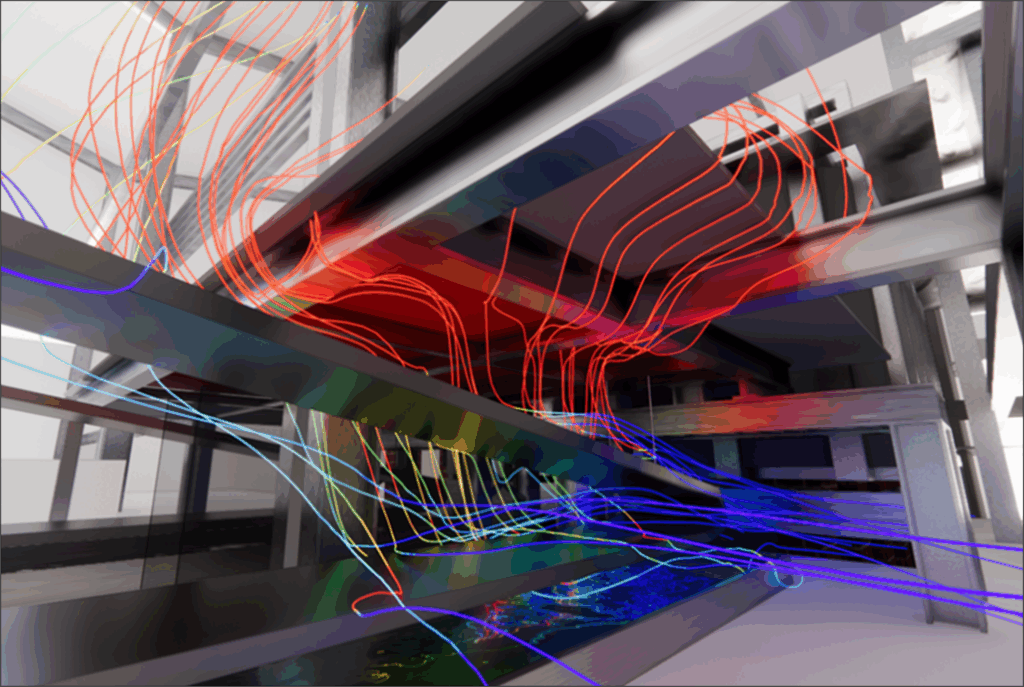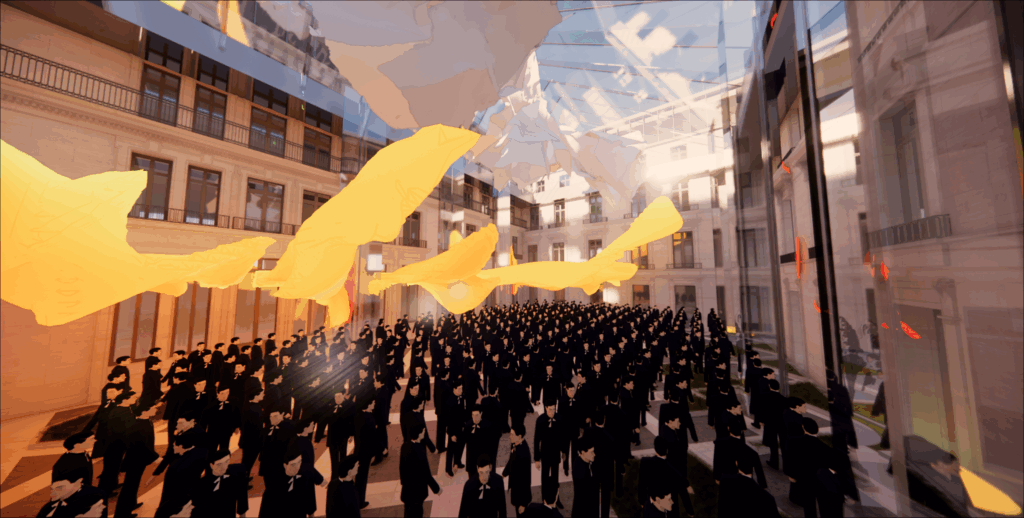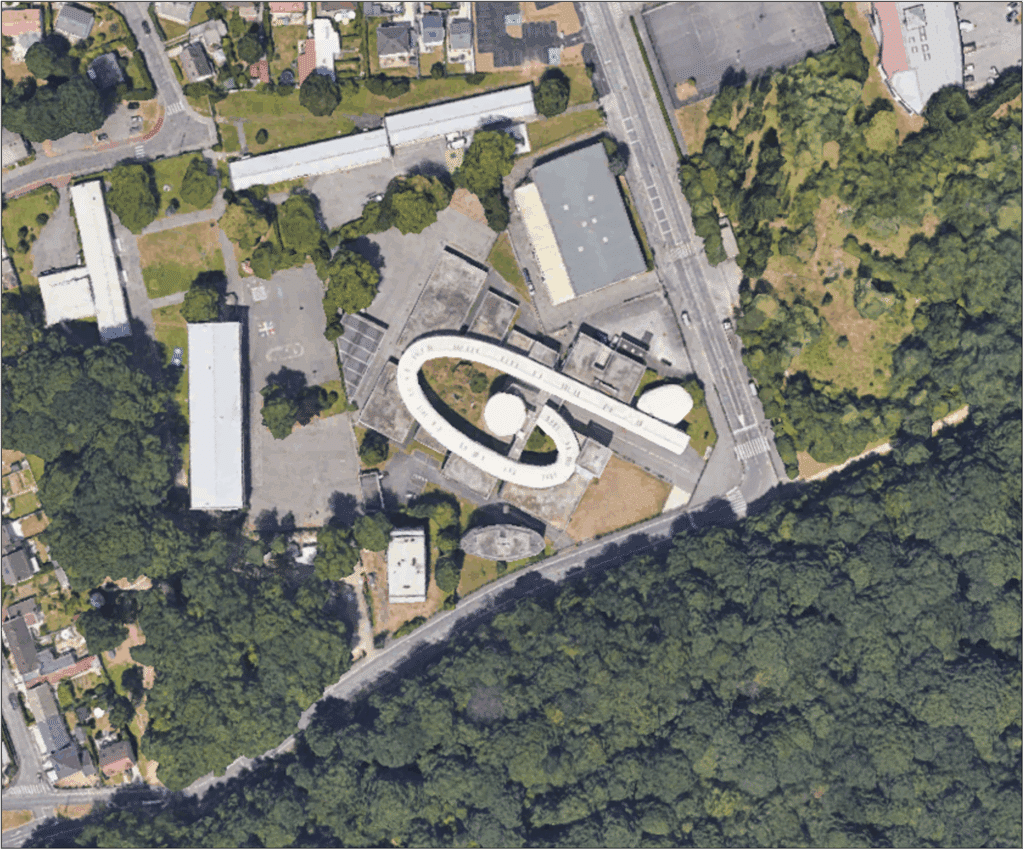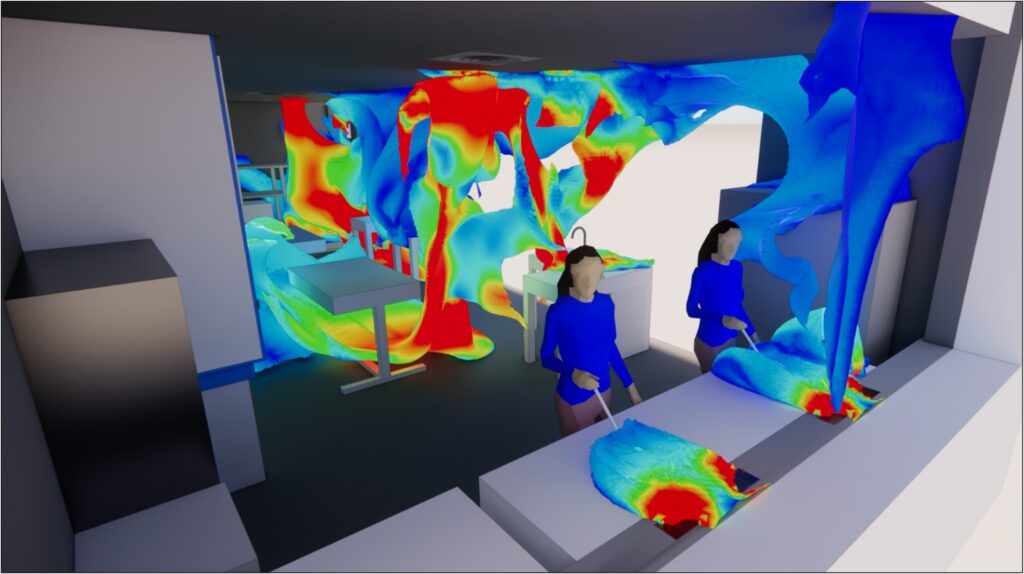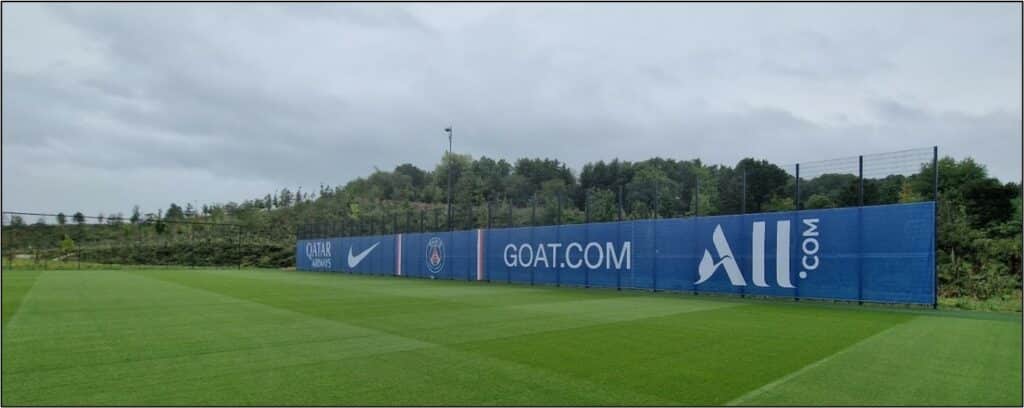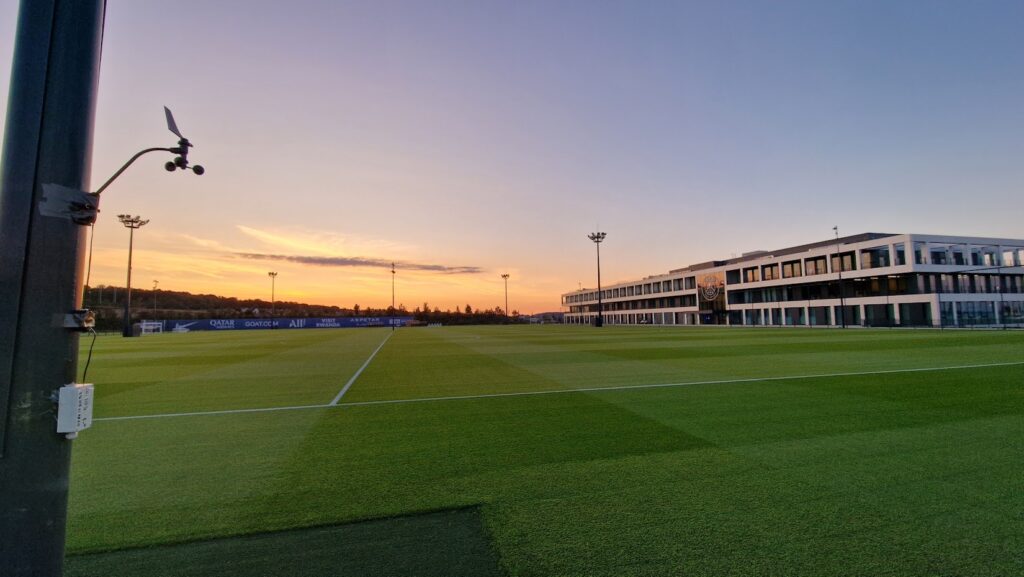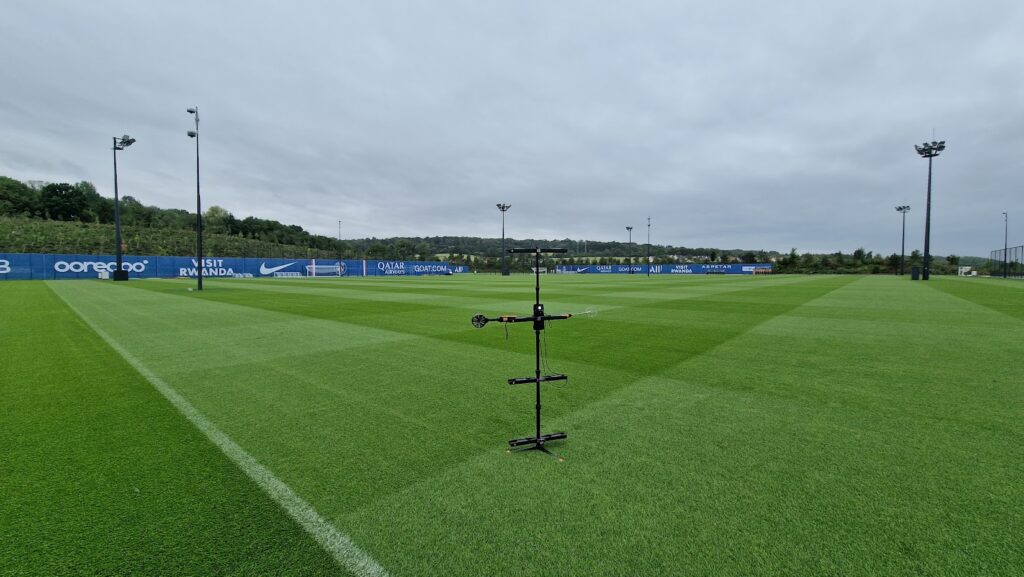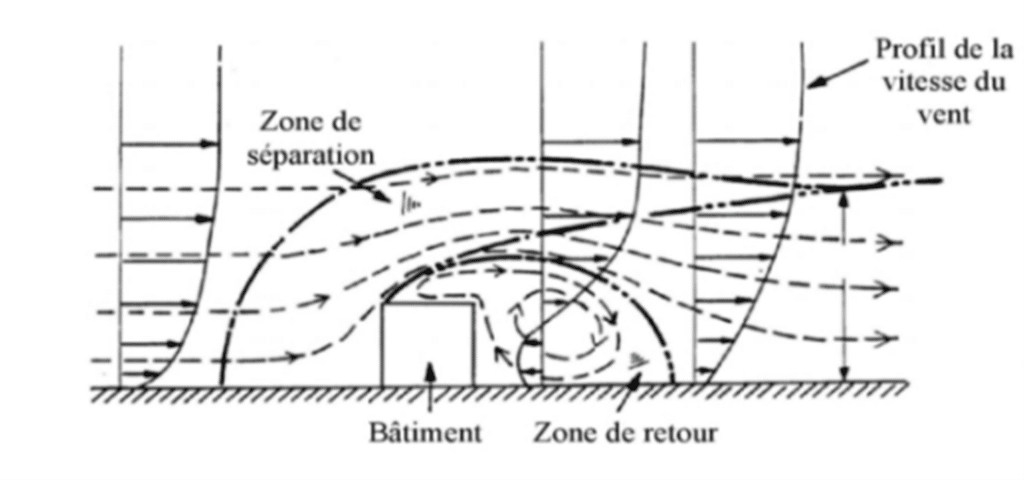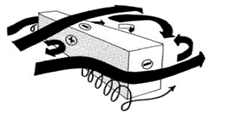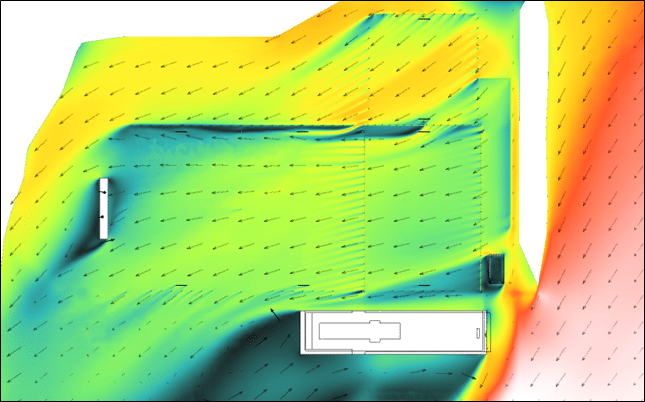Home » Air & Wind » Numerical simulation of pedestrian comfort in an urban environment » Confort au Vent – PSG training center
Confort au Vent – PSG training center
Wind comfort engineering
Since the creation of their new training center in Poissy, PSG has encountered problems with high wind speeds on the professional pitches, making training difficult for the players.
EOLIOS ingénierie contributed its technical expertise to the understanding and aeraulic modelling of the PSG training center by carrying out CFD studies.
Confort au Vent - PSG training center
Year
2024
Customer
PSG
Location
France
Typology
Air & Wind
Continue navigation :
Our other projects :
Latest news :
Technical files :
Our expertise:
Study of outdoor thermo-aerodynamic comfort
First of all, it was crucial to understand the wind direction and speed at the site . EOLIOS ingénierie used local weather data and satellite images to get the full picture. Then, thanks to sophisticated CFD simulations the company was able to to model the wind flow environment of the training center, taking into account the specific specific characteristics of the site such as buildings, playing fields and surrounding topographical formations.
The CFD study carried out by EOLIOS ingénierie enabled us to detailed analysis of fluid flow in and around the PSG training center. This analysis made it possible to detect the areas where the wind was strongest and the factors that could contribute to this situation . Thanks to this information measures have been taken to mitigate the impact of wind on training grounds .
Wind measurement campaign
Anemometers
The wind measurement at the training center is essential to understand aerodynamic conditions players face during their training sessions. EOLIOS ingénierie carries out a wind measurement campaign using anemometers specifically adapted to soccer pitches to provide valuable data on variations in wind speed and direction.
Visit first stage of the campaign consists of an in-depth analysis of the site for identify strategic points where the anemometers are to be installed. These points can be key positions on training grounds or areas exposed to particular wind conditions . The experts at EOLIOS ingénierie use specialized tools such as aerodynamic modeling software and local local meteorological data for accurately select these locations .
The anemometers continuously record wind data during the measurement campaign. Visit data are analyzed by EOLIOS engineering experts to gain an in-depth in-depth understanding of wind variations . L’ wind data analysis to determine wind patterns and trends . This includes the detection of areas with the highest wind speeds seasonal seasonal wind changes and specific specific weather conditions that influence the wind on training grounds. Data can be represented as charts or maps to clearly visualize wind characteristics.
Smoke tests for wind studies
L’ main objective of smoke tests is to visualize air movements at different heights above the ground. These tests are carried out using special smoke generators that produce visible smoke to visualize air currents air currents . By dispersing smoke in the field, we can visually observe how the wind moves and interacts with the environment.
The data collected during the smoke tests are then analysed analyzed in detail by the experts at EOLIOS ingénierie. The aim is to understand wind movements wind areas where the wind can be turbulent or create areas of strong air currents . This information is essential for informed decisions such as the layout of the terrain, the arrangement of surrounding structures or the choice of training techniques adapted to specific wind conditions. specific wind conditions .
The wind measurement campaign with smoke tests offered by EOLIOS ingénierie provides a precise view of aerodynamic conditions on a soccer pitch. Thanks to these tests, it is possible to visualize wind movements , d’ identify areas where the wind is stronger or more turbulent and take measures to optimize playing conditions . By combining this approach with wind speed and direction measurements a analysis is carried out to provide valuable information for the design design, layout and training of soccer pitches .
Wind comfort study
Wind comfort modeling
In this study, the the precise modelling of the environment around the is very important, as the topography is responsible for wind phenomena occurring on the grounds. For example, the building in the northern part of the site acts as an air mask
Flow diagram around the building - simplification
What is wind comfort?
Aeraulic comfort refers to air quality and ventilation conditions in an enclosed or outdoor space. An aeraulically comfortable environment contributes not only to physical well-being, but also to productivity and overall health.
Air comfort on a soccer pitch plays a crucial role in the players’ experience, influencing their performance and well-being during the game. Several factors contribute to this perceived comfort, and their balance can make the difference between a positive experience and a feeling of discomfort.
Air circulation in the field is essential. Good ventilation helps regulate ambient temperature, avoiding excessively hot or cold conditions that could affect player performance. Adequate airflow can also help dissipate body heat generated during physical exertion, improving thermal comfort. However, too rapid an airflow is detrimental to sportsmanship and performance, and can be unpleasant for players.
As mentioned above, our engineers develop the most appropriate solutions to solve any air discomfort problem, whether indoors or outdoors.
CFD simulation
The results of CFD (Computational Fluid Dynamics) simulation analysis of a soccer pitch offered valuable insights into the airflow and turbulence behaviors that occur during a match. These simulations help to understand and optimize player performance, in particular by analyzing the effect of ventilation, weather conditions and infrastructure design on the course of play.
Example of wind comfort and extreme wind study
In these simulations, several factors are taken into account, such as pitch geometry, player characteristics, wind speed and direction, air temperature and humidity. The complex interactions between these factors can be modeled to accurately predict airflows at different positions in the terrain.
For example, CFD analysis can help determine areas of the field where the ball is subject to strong turbulence, affecting its trajectory and range. This information can be used to improve pitch design to reduce turbulence and thus improve the quality of play.
In addition, CFD analysis was used to analyze the effects of surrounding topography, such as buildings or trees, on air flows around the site. This enables informed decisions to be made when designing technical solutions to optimize airflow and minimize unwanted disturbances.
General information on wind protection solutions for sportspeople
Several technical solutions are available for wind protection, depending on the desired objective and the specific constraints of the site. Here are a few examples of frequently used solutions:
- Use of barriers and screens : Installing barriers and screens can help reduce wind speed and create more sheltered areas. These structures can be built from robust materials such as steel, wood or composites, and can be adapted to suit the environment and the desired aesthetic.
- Landscaping: Planting trees and shrubs can provide a natural barrier against the wind. Evergreen trees and dense shrubs are often preferred to reduce wind speed. It is important to choose species that are well adapted to local conditions and to take into account the distance from infrastructures in order to minimize any risk of damage.
- Windbreak wall systems: Walls or panels specially designed to block the wind can be installed on the most exposed sides. These walls can be built from solid materials such as brick, concrete or glass. It is also possible to use canvas or wire mesh panels, which significantly reduce the force of the wind while retaining a degree of transparency.
- Screens and nets: The use of screens and nets can help limit wind speed and turbulence. These screens can be made from materials such as wire mesh, canvas or plastic. They can be installed along fences, on terraces or near exposed areas.
Building design and orientation: Proper building design can help reduce the impact of wind. For example, the use of rounded or profiled shapes can help minimize wind resistance. In addition, appropriate orientation of buildings with respect to the prevailing wind direction can reduce its direct effect on sensitive areas.
These technical solutions can be used alone or in combination, depending on the specific needs of each situation. It is important to take into account local environmental conditions, as well as climatic standards and regulations, when installing these solutions for optimum efficiency and safety.
Continue on this topic
Video summary of the study
Discover other projects
Study of aeraulic comfort – Middle school
Wind comfort study – Rooftop
Wind impacts on high-rise buildings: Tours Olympiades in Paris
Comfort – Rooftop of a palace – Casablanca
Tour Liberté – La Défense
Impact of wind on a solar power plant
Cooling towers – ICPE
Pedestrian comfort study – La Défense
Confort au Vent – PSG training center
Wind study – La Défense
Fine particle capture in a metro station
Sharaan by Jean Nouvel resort
Air coolers – Critical study – Heat wave
Fine dust measurements
Balenciaga – Wind potential


